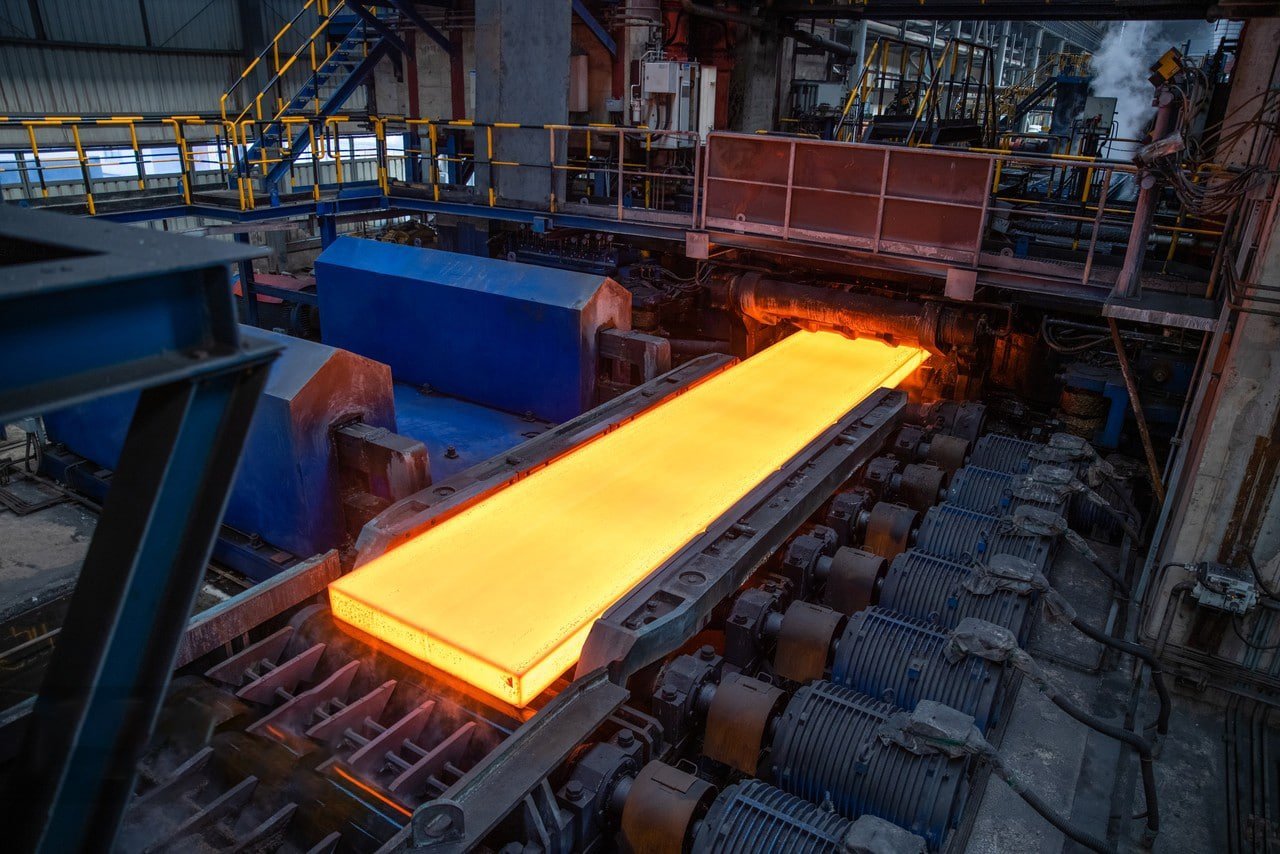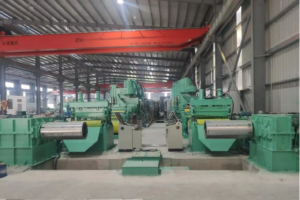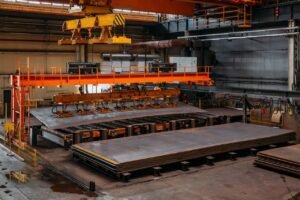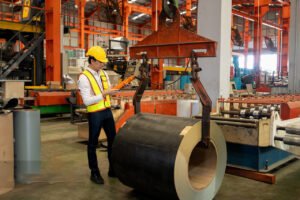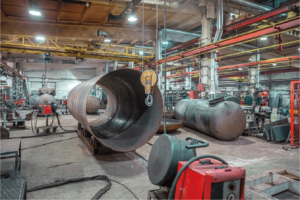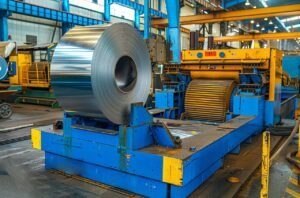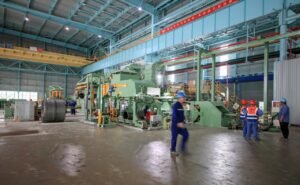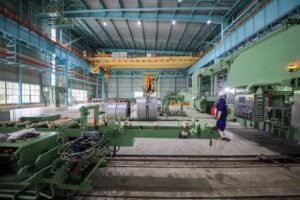High-Pressure Stainless Plates: PSI vs Thickness
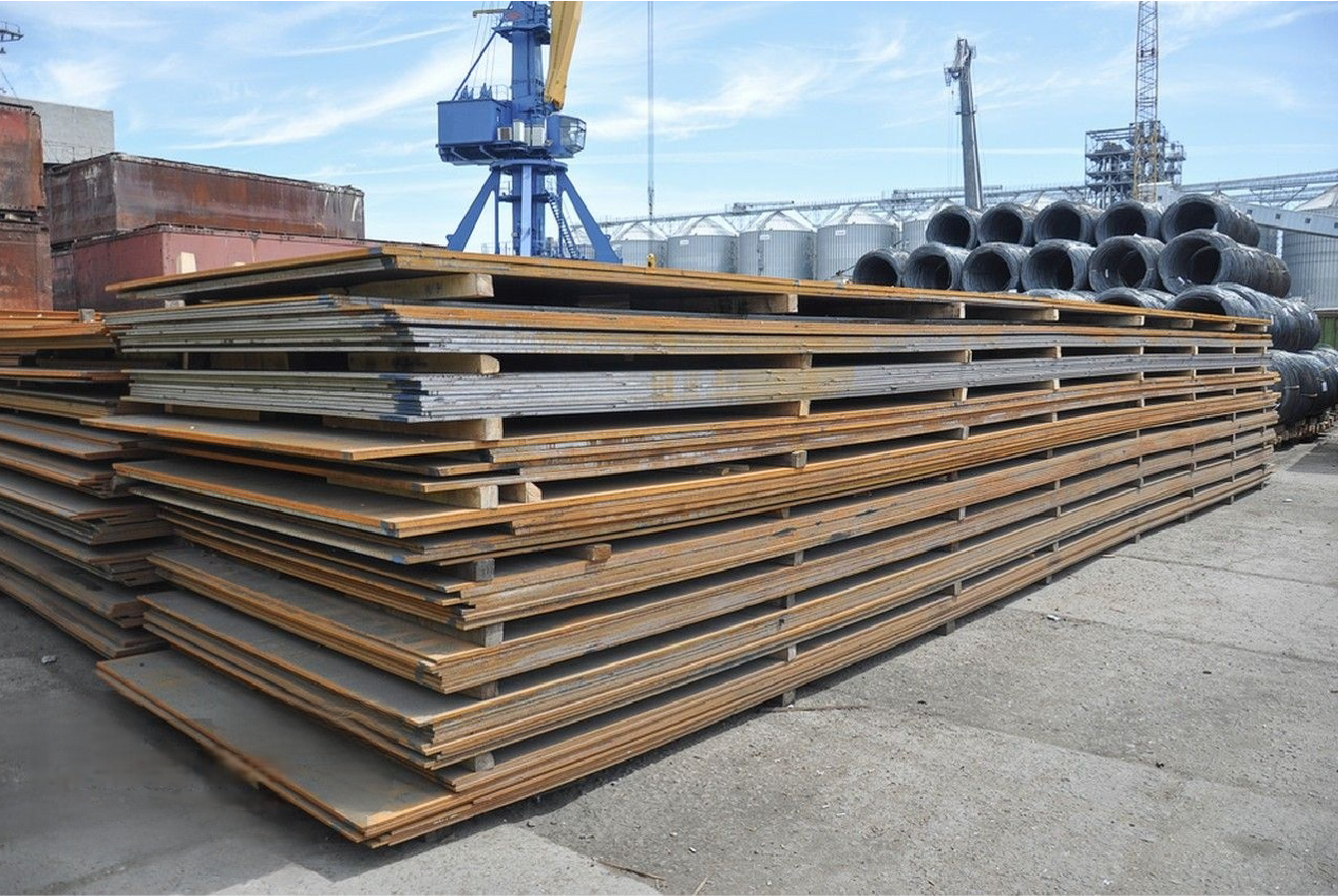
Are you struggling to select the right stainless steel plate for high-pressure applications? Choosing incorrectly can lead to catastrophic failures, significant safety hazards, and costly project delays. Understanding the critical relationship between a plate's pressure rating (PSI) and its thickness is the key to ensuring structural integrity and success.
The pressure rating (PSI) of a stainless steel plate is directly influenced by its thickness. A thicker plate provides greater material cross-section to withstand higher pressures, effectively resisting deformation and rupture. This ensures the necessary structural integrity and safety factor required in demanding high-pressure environments.
While it's easy to assume that "thicker is always better," this oversimplification can lead to over-engineered, unnecessarily expensive solutions. The true path to an optimal design involves a more nuanced understanding of material science, design codes, and operating conditions. In this article, I'll draw on my experience to guide you through these factors, helping you make informed, efficient, and safe decisions for your projects.
From my vantage point as Global Business Director at MFY, I’ve seen firsthand how a deep understanding of material capabilities can transform a project's outcome. The relationship between pressure and thickness isn't just a theoretical formula; it's the foundation of safety and efficiency in industries from chemical processing to energy. It requires a dialectical approach, balancing the raw strength of steel against variables like temperature, corrosion, and the specific geometry of the application. Industry standards, such as the ASME Boiler and Pressure Vessel Code1, provide a crucial framework, but true optimization comes from applying these principles to real-world scenarios, selecting not just any steel, but the right steel for the job.
What are the typical pressure ratings (PSI) for stainless plates?
Are you uncertain about the standard pressure ratings for stainless steel plates? This ambiguity can easily lead to either over-engineering, which wastes your budget, or under-engineering, which poses serious safety risks. I will clarify the typical pressure ranges you will encounter across different industrial applications.
STypical pressure ratings for stainless steel plates are not standardized; they are determined by the specific application. For general industrial use, these can range from low pressures under 150 PSI for storage tanks to well over 10,000 PSI for specialized equipment like high-pressure reactors and separators.
The reason for this vast range in pressure ratings, from atmospheric to extreme, lies in the diverse demands of modern industry. A water storage tank for a food processing plant simply doesn't face the same stresses as a chemical reactor in a high-temperature, high-pressure synthesis process. I recall a project with a mid-sized chemical manufacturer in India who needed to upgrade their process vessels. They were initially focused only on the pressure rating but hadn't fully considered the impact of the corrosive media at elevated temperatures. This highlights a crucial point: a PSI rating is not a standalone number on a spec sheet. It's the end result of a comprehensive engineering calculation that accounts for the material's properties, the vessel's design, and its specific operating environment. This is why a one-size-fits-all approach is not only inefficient but potentially dangerous. A deeper dive into how these ratings are categorized based on application will provide the clarity needed to select the correct material for your specific requirements, ensuring both safety and cost-effectiveness. The following sections will break down these categories, supported by real-world examples and data.

The pressure containment capability of a stainless steel plate is a direct function of its intended use, which we can broadly categorize into low, medium, and high-pressure segments. Each category employs different material grades, thicknesses, and design philosophies tailored to the specific risks and operational demands. At MFY, our integrated supply chain is structured to cater to this entire spectrum, from standard-grade coils for low-pressure tanks to high-specification plates for critical service applications. This comprehensive approach allows us to guide our clients toward the most appropriate and cost-effective solution.
Understanding Low-Pressure Applications (Below 500 PSI)
In the realm of low-pressure applications, the primary concerns are often corrosion resistance, hygiene, and cost-effectiveness rather than immense structural strength. These applications include atmospheric storage tanks for water or food products, architectural cladding, and ductwork. The pressure exerted is typically hydrostatic, generated by the weight of the fluid itself, and rarely exceeds a few hundred PSI. The focus here is on selecting a material that will not contaminate the product and will resist degradation from the environment over a long service life.
A clear example of this is a project we supplied for an Indonesian palm oil producer. Their main requirement was for large-scale storage tanks that could prevent product contamination and withstand the humid, corrosive atmosphere. The internal pressure was minimal. We worked with their contractor to supply 304L stainless steel plates of a moderate thickness (typically 4mm to 8mm). The 'L' grade was chosen for its improved weldability and resistance to sensitization, while the thickness was more than sufficient for the hydrostatic load. Choosing a thicker or higher-grade plate would have provided no additional benefit and would have significantly increased the project's material cost.
For these low-pressure scenarios, the calculations are relatively straightforward, often governed by API standards like API 650 for welded steel tanks. The required thickness is a function of the tank's diameter, height, and the specific gravity of the liquid it holds. The data clearly shows that for a standard 10-meter high water tank, a 6mm thick plate at the bottom course is typically sufficient. This data-driven approach prevents over-specification and ensures resources are allocated efficiently, a principle we always advocate for our clients.
Navigating Medium-Pressure Environments (500 - 3,000 PSI)
This category represents a significant portion of industrial applications, including process vessels, boiler components, and hydraulic systems. Here, the balance between pressure resistance, material cost, temperature effects, and corrosion becomes much more critical. The design of these components is strictly regulated by codes like the ASME Boiler and Pressure Vessel Code (BPVC), which dictates minimum required thicknesses based on a host of factors. The choice between grades like 304 and 316 becomes a key decision point.
In these environments, material selection directly impacts the required thickness. While both 304 and 316 stainless steel have similar strengths at ambient temperatures, the superior corrosion resistance of 316, due to its molybdenum content, makes it essential for handling chlorides, acids, and other aggressive chemicals. Furthermore, at elevated temperatures, the allowable stress of different materials begins to diverge, directly influencing the thickness calculation. A vessel designed for 1,500 PSI at 800°F will require a thicker plate than one designed for the same pressure at room temperature.
The table below provides a simplified comparison based on ASME code principles for a hypothetical pressure vessel, illustrating how temperature affects the allowable stress and, consequently, the required thickness. The data shows that while the required thickness for 304 and 316 is similar at lower temperatures, 316 offers a distinct advantage at higher temperatures due to its superior strength retention.
| Material Grade | Design Temperature (°F) | Allowable Stress (ksi) | Required Thickness (approx. inches) for 1500 PSI |
|---|---|---|---|
| SS 304 | 400 | 16.7 | 1.15 |
| SS 316 | 400 | 16.7 | 1.15 |
| SS 304 | 800 | 12.5 | 1.54 |
| SS 316 | 800 | 13.9 | 1.38 |
Mastering High-Pressure and Ultra-High-Pressure Systems (Above 3,000 PSI)
Once we enter the high-pressure domain, safety becomes the paramount concern, and material science is pushed to its limits. These applications are found in industries like oil and gas (e.g., wellhead components, separators), chemical synthesis (reactors), and advanced waterjet cutting or desalinization systems. The material must withstand extreme forces, often in conjunction with high temperatures and severely corrosive media. Standard austenitic stainless steels are often insufficient for these tasks.
Here, advanced materials like duplex and super-duplex stainless steels come to the forefront. These grades possess a mixed austenite-ferrite microstructure, which gives them a significantly higher yield strength—often more than double that of 304 or 316 grades. This superior strength allows for the design of vessels with thinner walls, which reduces weight, welding complexity, and overall cost, even though the material itself is more expensive per kilogram. The calculations for these systems are highly complex, often requiring Finite Element Analysis (FEA) to accurately model stress concentrations and ensure a robust design under codes like ASME Section VIII, Division 2 or 3.
I recently worked with a key partner in the Middle East who was developing next-generation high-pressure desalination equipment. The system had to handle immense pressures exceeding 5,000 PSI while resisting constant attack from hot, concentrated brine. A standard 316L plate would have required an impractical thickness. Our technical team collaborated with their engineers, recommending and supplying a specialized super-duplex grade. This allowed them to achieve the required pressure rating with a manageable wall thickness, providing the necessary corrosion resistance and ensuring a 25-year design life in a brutal environment.
Thicker plates withstand higher PSITrue
Increased thickness provides greater material cross-section to resist deformation under pressure.
All applications need thick platesFalse
Low-pressure applications like water tanks often use thinner plates as excessive thickness provides no benefit.
How does the thickness of a stainless plate impact its pressure resistance?
You already know that thickness is a key factor for pressure containment, but how does it directly translate into PSI capacity? Guessing or making assumptions about this relationship can lead to dangerous under-specifying or costly over-specifying. I will explain the direct, physical relationship between a plate's thickness and its ability to resist pressure.
A stainless plate's pressure resistance increases directly with its thickness. This is a fundamental principle of mechanical engineering, as a thicker cross-section provides more material to distribute applied stress, thereby reducing the strain per unit area and preventing deformation or rupture under load.
This relationship, while direct, is governed by precise engineering principles. It's not as simple as doubling the thickness to double the pressure rating in a finished product, because the geometry of the pressure-containing component plays an equally important role. To illustrate this concept in a simplified way, engineers often refer to Barlow's formula for pipes, which states that pressure (P) is equal to (2St/D), where is the allowable stress,is the wall thickness, and is the diameter. While this formula is for thin-walled cylinders, it clearly shows that pressure (P) is directly proportional to thickness (t). As we delve deeper, we'll explore the more complex formulas used for pressure vessels2 and analyze how this fundamental principle applies in real-world engineering. At MFY, our technical team frequently assists clients with these preliminary calculations to help them scope projects effectively, ensuring the material they procure is perfectly aligned with the engineering requirements. This foundational knowledge is key to building safe and efficient pressure equipment.
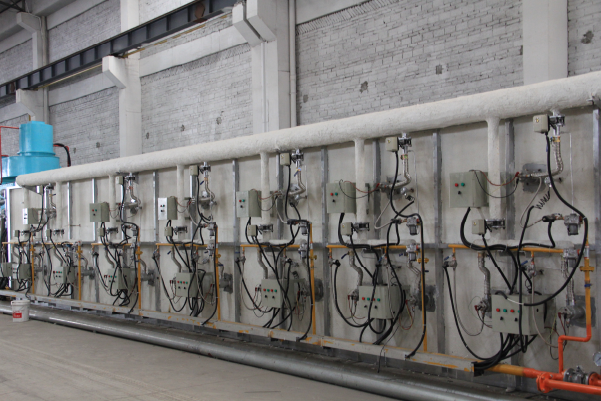
The impact of thickness on pressure resistance is one of the most fundamental concepts in mechanical design. It is rooted in the way materials handle stress—the internal forces that molecules exert on each other when an external force, like pressure, is applied. A thicker plate provides a larger cross-sectional area for these internal forces to act upon, which is the key to its enhanced strength. Understanding this principle at three levels—the basic concept of stress distribution, its quantification through engineering formulas, and the modifying role of geometry—is essential for any engineer, fabricator, or contractor working with pressure applications.
The Fundamental Principle: Stress Distribution
At its core, stress (sigma) is defined as the force (F) acting on a specific cross-sectional area (A). In a pressure vessel, the force is generated by the internal pressure pushing outwards on the vessel walls. The cross-sectional area is the thickness of the plate itself. When you increase the thickness of the plate, you are increasing this area. According to the formula sigma = F/A, if the force remains constant, increasing the area (A) will directly decrease the stress (sigma). This reduction in stress is what gives a thicker plate its higher pressure rating.
Think of it like trying to break a single toothpick versus a bundle of ten toothpicks held together. The bundle has a much larger cross-sectional area and can withstand a significantly greater force because that force is distributed across all ten toothpicks. Each individual toothpick experiences only a fraction of the total load. A thicker steel plate behaves in precisely the same way. The internal stresses are spread out over more material, moving them further away from the material's ultimate tensile strength and, more importantly, its yield strength—the point at which permanent, non-recoverable deformation occurs.
The goal in any pressure vessel design is to keep the operational stress safely below the material's yield strength by a predetermined safety factor. A thicker plate provides a larger buffer, or margin of safety, between the working stress and the material's failure point. This is why, all other factors being equal, a thicker plate is inherently safer and can be rated for a higher pressure. It's a direct, physical relationship based on the distribution of force.
Quantifying the Impact: Engineering Formulas and Calculations
While the principle is simple, engineers need to quantify it precisely. For pressure vessels, one of the most common formulas (from ASME Section VIII) for calculating the required thickness of a cylindrical shell under internal pressure is: t = \frac{PR}{SE - 0.6P}. In this formula, t is the thickness, P is the internal pressure, R is the inside radius, S is the maximum allowable stress for the material at the design temperature, and E is the efficiency of the welded joints.
Let's walk through a tangible example to see the numbers in action. Imagine we need to design a vessel with a 24-inch inside radius (R) to operate at 1,000 PSI (P). We'll use a stainless steel grade with a maximum allowable stress (S) of 20,000 PSI and assume high-quality welds with a joint efficiency (E) of 1.0. The calculation would be: t = \frac{1000 \times 24}{(20000 \times 1.0) - (0.6 \times 1000)} = \frac{24000}{20000 - 600} = \frac{24000}{19400} \approx 1.24 inches. This is the minimum thickness required by the code.
Now, let's see how a change in thickness impacts the pressure rating. If we decide to use a thicker plate, say 1.5 inches, we can rearrange the formula to solve for the new maximum pressure: P = \frac{SEt}{R + 0.6t}. Plugging in the new thickness: P = \frac{20000 \times 1.0 \times 1.5}{24 + (0.6 \times 1.5)} = \frac{30000}{24 + 0.9} = \frac{30000}{24.9} \approx 1205 PSI. By increasing the thickness by about 21%, we've increased the pressure rating by over 200 PSI. This direct, quantifiable relationship is what engineers use every day to design safe equipment.
Beyond Thickness: The Role of Geometry in Pressure Containment
However, thickness is not the only variable in the equation; the geometry of the component is just as critical. The most efficient shape for containing pressure is a sphere, as it allows stress to be distributed perfectly evenly across its entire surface. This is why you see spherical storage tanks for high-pressure gases like LPG. In a cylindrical vessel, the stress is not uniform. The stress acting along the circumference (hoop stress) is twice as high as the stress acting along the length (longitudinal stress). This is why a cylinder will always split open lengthwise if it fails.
The impact of geometry is most dramatic when comparing a curved surface to a flat one. A flat plate, such as a manway cover or a flat end-cap on a vessel, is a very inefficient shape for handling pressure. Unlike a curved wall, which resists pressure through simple tension (stretching), a flat plate is subjected to powerful bending forces that try to bulge it outwards. Resisting these bending forces requires significantly more material. For this reason, the formula for a flat head is different and will always calculate a required thickness that is much greater than that of the cylindrical shell for the exact same pressure.
I have a great client story illustrating this. An engineering contractor in Russia was designing a series of process tanks and had specified very thick, heavy flat plates for the end covers. Our technical team reviewed the drawings and proposed using formed torispherical heads instead. While a formed head is more complex to manufacture than a simple flat circle, its curved geometry handles pressure far more efficiently. The switch allowed them to reduce the plate thickness for the heads by nearly 40%. This not only saved a tremendous amount on material costs but also reduced the weight of the vessels, making them easier to transport and install. It was a perfect example of how smart design and thickness optimization work hand-in-hand.
Thicker plates resist more pressureTrue
A thicker cross-section distributes stress over more material, reducing strain per unit area and increasing pressure resistance.
Doubling thickness doubles pressure ratingFalse
While thickness increases pressure resistance, the relationship isn't linear due to geometric factors and material properties.
What factors influence the relationship between PSI and thickness in stainless steel plates?
You might believe that achieving a desired PSI rating is simply a matter of specifying a certain thickness. However, ignoring other critical factors like material grade, temperature, or corrosion can lead to unexpected and catastrophic failures, even with a plate that seems thick enough. Let's uncover the hidden variables that are essential to this relationship.
Beyond mere thickness, the relationship between PSI and plate design is critically influenced by the specific stainless steel grade (alloy composition), the operating temperature (which alters material strength), the presence of corrosive agents (requiring a corrosion allowance), and the specific design code and safety factors applied.
Achieving a safe and efficient design requires a holistic view that extends far beyond a single dimension. It demands a careful consideration of all the interacting variables that define the operational environment. This is precisely where a true supply chain partner like MFY adds value—we don’t just ask, "how thick?"; we ask, "what is this for?". I recall a conversation with a client who was about to order a standard 304L plate for a high-temperature heat exchanger application. A quick discussion about the 750°F operating temperature immediately raised a red flag. We guided them toward a high-temperature grade designed to retain its strength under those conditions, preventing a potential failure. This collaborative, in-depth approach is essential because the relationship between PSI and thickness is not a simple two-way street; it's a multi-variable equation. The following sections will peel back the layers on each of these crucial factors.
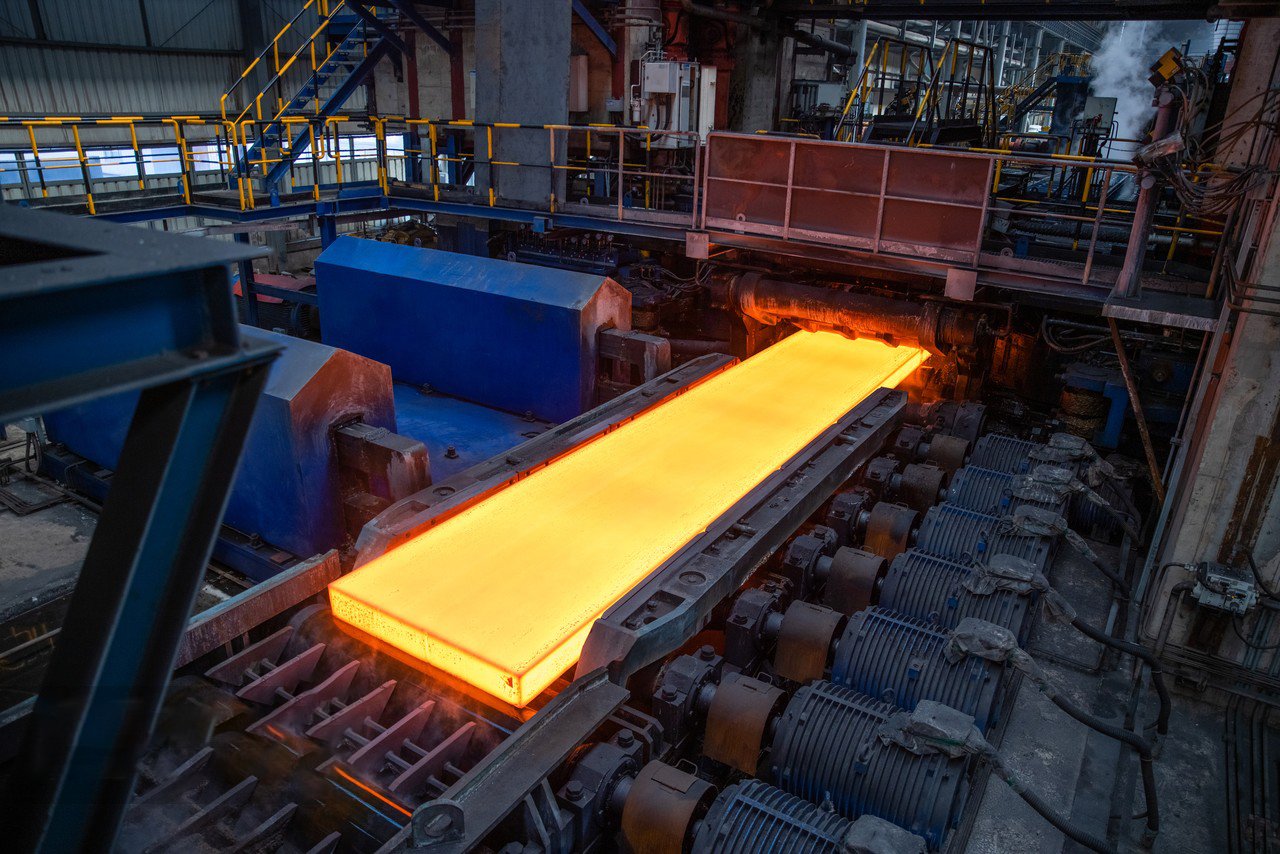
To truly master the selection of stainless steel plates for pressure applications, one must look beyond the ruler and consider the material's intrinsic properties and the environment in which it will serve. The thickness required to safely contain a given pressure is profoundly influenced by three key factors: the specific grade of stainless steel chosen, the operating temperature range, and the anticipated corrosion over the equipment's lifespan. Neglecting any one of these can render a design unsafe or uneconomical. As an integrated steel provider, we see every day how these factors dictate the success of our clients' projects.
Material Grade and Alloy Composition
The term "stainless steel" covers a wide family of alloys, each with a unique chemical composition and distinct mechanical properties. The main families used in pressure applications are the Austenitic (like the common 304 and 316 grades), Ferritic, and Duplex steels. While austenitic grades are prized for their excellent corrosion resistance and formability, Duplex grades, which have a mixed austenitic-ferritic microstructure, offer a significant advantage in terms of raw strength.
The data is compelling. The minimum specified yield strength (the point of permanent deformation) for 316L stainless steel is approximately 30,000 PSI (30 ksi). In contrast, a common duplex grade like 2205 has a minimum yield strength of around 65,000 PSI (65 ksi)—more than double. This has a massive impact on design. According to the pressure vessel design formulas, where allowable stress is a derivative of yield strength, using Duplex 2205 can allow for a wall thickness reduction of 50% or more compared to 316L for the same pressure rating. This translates directly into lighter equipment, lower fabrication and welding costs, and easier installation.
We had a client, a manufacturer of chemical transport tanks in Southeast Asia, who needed to maximize the payload of their vehicles while adhering to strict road weight limits and pressure safety regulations. Their original design used 316L. We worked with their engineering team to redesign the tanks using Duplex 2205 plates from our inventory. The resulting tanks were significantly lighter, allowing them to carry more product on every single trip. The initial higher cost per kilogram of the Duplex material was quickly offset by the increased operational profitability, proving that the "stronger but lighter" approach is often the most economical one.
The Critical Impact of Operating Temperature
Temperature is another critical variable that directly alters a material's strength. As the temperature of stainless steel increases, its tensile and yield strengths decrease. This phenomenon, known as "derating," is a fundamental consideration in the design of any equipment that operates above ambient temperatures, such as boilers, reactors, and heat exchangers. A plate that is perfectly safe at 100°F might be dangerously close to failure at 800°F under the same pressure.
The ASME Boiler and Pressure Vessel Code provides extensive tables of allowable stress values for different materials at various temperatures. A quick look at these tables reveals the dramatic effect. For example, the allowable stress for 304 stainless steel is approximately 20,000 PSI at 100°F, but at 900°F, that value plummets to just 11,900 PSI. This means that to safely contain the same pressure at the higher temperature, the plate thickness must be increased by a factor of roughly 20000/11900, or nearly 70%. Ignoring temperature derating is one of the most serious errors an engineer can make.
The effect of temperature also extends to cryogenic (very low temperature) applications. While some steels can become brittle and fracture at low temperatures, austenitic stainless steels like 304 and 316 actually maintain or even slightly increase their strength while retaining excellent ductility and toughness. This makes them the material of choice for equipment used in handling liquefied natural gas (LNG), which exists at -260°F (-162°C). In this case, the material's performance at the temperature extreme is the enabling factor.
Corrosion Allowance and Design Life
The final key factor is the anticipated loss of material over time due to corrosion. In many chemical, marine, or industrial environments, the steel plate will slowly be eaten away by its contents or the external atmosphere. To ensure the vessel remains safe for its entire intended service life, engineers add a "corrosion allowance"—an extra layer of thickness beyond what is required for pressure containment alone.
This allowance is calculated based on the expected corrosion rate of the material in the specific service environment. For instance, if industry data shows that a certain grade of steel in contact with a particular chemical corrodes at a rate of 0.1 mm per year, and the equipment is intended to have a design life of 20 years, then a corrosion allowance of at least 2 mm (0.1 x 20) must be added to the calculated structural thickness. This ensures that even after 20 years of service, the remaining steel is still thick enough to safely handle the maximum allowable working pressure.
We see this practice constantly with our distributor clients in the Middle East who supply plates for desalination plants. Due to the highly corrosive nature of hot brine, they always specify a generous corrosion allowance of 3mm or more on top of the structural requirement. We have worked with them to ensure our stock of 316L and Duplex plates includes thicknesses that accommodate this common regional requirement. This foresight in planning for material loss is a critical layer of safety that protects the investment and, more importantly, the personnel and environment around the equipment.
Duplex steel is stronger than 316LTrue
Duplex 2205 has a minimum yield strength of 65,000 PSI compared to 316L's 30,000 PSI, allowing for significant thickness reduction in pressure applications.
Temperature increases steel strengthFalse
Stainless steel actually loses strength as temperature rises (derating effect), requiring thicker plates for high-temperature applications.
How can manufacturers optimize the thickness for desired pressure ratings?
As a manufacturer, you need to guarantee safety and compliance without eroding your profit margins by using excessively thick and heavy materials. Over-engineering is expensive and reduces competitiveness, while under-engineering is simply not an option. Let's explore the proven strategies you can use to effectively optimize plate thickness.
Manufacturers optimize plate thickness by utilizing advanced engineering tools like Finite Element Analysis (FEA) for precise stress modeling, selecting higher-strength alloy grades like Duplex steel, employing more efficient geometric designs such as formed heads, and ensuring high-quality fabrication to maximize joint efficiency.
Optimization is the art and science of finding the precise intersection of safety, performance, and cost. It's a conversation I have every day with my clients at MFY, from large-scale Engineering, Procurement, and Construction (EPC) contractors to niche equipment integrators. The goal is never to find the absolute thickest plate, but to identify the right plate for the job. This is rarely a simple transaction; it's a collaborative process that requires a deep dive into the application's specific needs and challenges. True optimization isn't about cutting corners; it's about leveraging advanced tools, materials, and design principles to create a solution that is both incredibly safe and economically viable. Let me walk you through some of the key methodologies our most innovative and successful partners employ to achieve this balance.
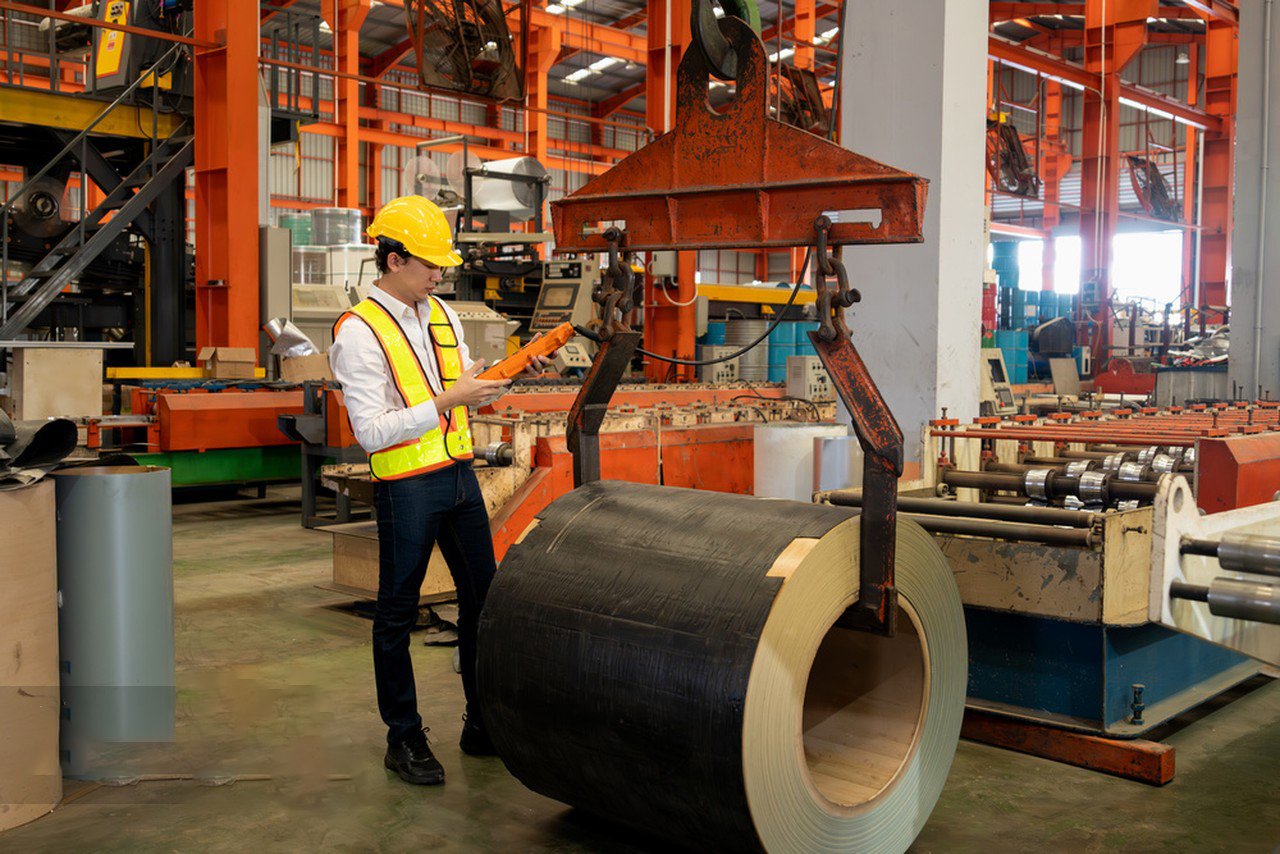
In a competitive global market, the ability to optimize designs for material efficiency is a significant advantage. Simply adding thickness as a brute-force solution to meet a pressure rating is an outdated and costly approach. Modern manufacturing relies on a sophisticated interplay of advanced simulation, strategic material selection, and intelligent design to create products that are safe, durable, and economical. At MFY, we position ourselves as more than just a material supplier; we are a partner in this optimization process, providing the high-quality materials and technical insights our clients need to innovate and lead in their respective fields.
Leveraging Advanced Engineering and Simulation
While standard code formulas provide the essential baseline for safe design, they are inherently conservative and based on simplified models. To achieve a higher level of optimization, manufacturers now turn to powerful software tools like Finite Element Analysis (FEA). FEA allows engineers to create a detailed digital twin of their pressure vessel or component and simulate how it will behave under real-world stress, pressure, and thermal loads.
The process involves breaking the complex geometry of the design into thousands of smaller, simpler shapes called "elements." The software then applies the physical principles of stress and strain to each individual element and combines the results to create a detailed, color-coded map of stress distribution across the entire part. This visual analysis is incredibly powerful. It can immediately highlight high-stress concentration points that might need reinforcement, but just as importantly, it can reveal large areas that are under very little stress. These "over-engineered" regions are prime candidates for safely reducing plate thickness, thereby removing unnecessary weight and material cost without compromising the structural integrity of the high-stress zones.
I worked with a client who manufactures complex hydraulic manifolds for industrial machinery, which must withstand pressures up to 6,000 PSI. Their initial design was robust but very heavy. By implementing FEA, their engineering team identified that over 40% of the manifold's surface area was under minimal stress. They were able to strategically thin out these sections, resulting in a 15% reduction in the final product's weight and a corresponding drop in raw material costs, making their product more competitive.
Strategic Material Selection
One of the most effective optimization strategies is to focus on the strength-to-weight ratio of the material. It is often more economical in the long run to use a smaller quantity of a more expensive, higher-strength material than a large quantity of a cheaper, standard-grade material. The upfront cost per kilogram may be higher, but the total material cost for the project can be significantly lower.
This is best illustrated with a direct comparison. Consider designing a vessel for a 2,000 PSI application. Using standard 316L stainless steel, the design might call for a 1-inch thick plate. By switching to Duplex 2205, with more than double the yield strength, the required thickness could be reduced to less than half an inch. This has a cascading effect on savings.
| Feature | SS 316L Plate | Duplex 2205 Plate |
|---|---|---|
| Min. Yield Strength | ~30 ksi (205 MPa) | ~65 ksi (450 MPa) |
| Approx. Thickness for 2000 PSI | 1.0 inch | 0.45 inch |
| Approx. Weight (per sq. meter) | ~78.5 kg | ~35.3 kg |
| Relative Cost Index | 1.0x | 1.5x - 1.8x |
As the table shows, even if the Duplex steel costs 80% more per kilogram, the fact that you need less than half the weight can lead to a lower overall material purchase price. Beyond that, the savings multiply: a lighter vessel is cheaper to transport, requires less extensive foundations, is easier to handle and install, and requires less weld metal and time to fabricate. This "total cost of ownership" perspective is what we encourage at MFY, helping clients see beyond the initial price per ton.
The Impact of Smart Design and Manufacturing Techniques
Optimization also extends to the design and fabrication process itself. As I've mentioned before, geometry is key. The simple choice to use a properly designed formed head (like an ellipsoidal or torispherical head) instead of a thick flat plate is a fundamental design optimization that drastically reduces the required thickness and weight for the ends of a pressure vessel.
Furthermore, the quality of fabrication, particularly welding, has a direct mathematical impact on the required thickness. In the design formula, the "Joint Efficiency" factor (E) accounts for the strength of the weld relative to the base metal. A perfect, full-penetration weld that has been rigorously inspected with radiography might have an efficiency of E=1.0. A lower quality, partial-penetration weld might only be rated at E=0.6. If your design must use this lower factor, you will need to increase the plate thickness by almost 40% to compensate for the weaker joint.
This is where MFY's commitment to quality plays a direct role in our clients' optimization efforts. We provide stainless steel plates with consistent, certified chemical and mechanical properties. This reliability allows fabricators to develop and maintain stable, high-quality welding procedures. When they can confidently produce welds that merit a higher joint efficiency factor, they can design lighter and more efficient equipment. By providing the foundation of quality material, we empower our clients to optimize their end products.
FEA reduces material wasteTrue
Finite Element Analysis identifies low-stress areas where thickness can be safely reduced.
Thicker plates always mean saferFalse
Strategic material selection and design optimization often provide better safety at lower thickness.
What are the best practices for selecting stainless steel plates based on pressure requirements?
When faced with the complex task of selecting a plate for a pressure application, the fear of making a costly or unsafe mistake is real. The wrong choice can result in project failure, regulatory non-compliance, and severe damage to your company's reputation. Following a set of proven best practices is the key to confident and correct selection.
Best practices for plate selection include: rigorously defining all operating conditions (pressure, temperature, media), strictly adhering to governing design codes (e.g., ASME), specifying an appropriate corrosion allowance for the intended design life, and collaborating closely with a knowledgeable material supplier to select the optimal grade.
Ultimately, a successful outcome hinges on diligence and partnership. Selecting a stainless steel plate for a critical pressure application is not a simple commodity purchase; it is a fundamental engineering decision that carries significant weight. Throughout my career as Global Business Director, I have seen projects succeed brilliantly or fail disappointingly based on the thoroughness applied during this initial material selection phase. The single most important best practice is to shift your mindset: treat your material supplier not as a transactional vendor, but as an integral partner in your project's safety and success. When you share information and leverage their expertise, you build a stronger foundation for the entire project. Let’s consolidate this philosophy into a clear, actionable checklist of best practices that you can apply to your next project.

Adhering to a robust set of best practices is the most effective way to mitigate risk and ensure the long-term integrity of your pressure equipment. This is not about adding bureaucracy; it's about applying a systematic, engineering-led approach to a critical decision. The process can be broken down into three core areas: meticulously defining the operational context, ensuring unwavering compliance with established codes and documentation standards, and fostering a true collaborative partnership with your supply chain. Mastering these three areas will consistently lead to safer, more reliable, and more cost-effective outcomes.
The "Five Finger" Rule: Defining Your Operating Conditions
Before you can even begin to think about a specific steel grade or thickness, you must have a complete and unambiguous definition of the service environment. I call this the "Five Finger Rule"—five key variables you must have at your fingertips.
- Pressure: Define the Maximum Allowable Working Pressure (MAWP), not just the normal operating pressure. You must account for potential process upsets, pressure spikes, or any vacuum conditions that could occur.
- Temperature: Document the full range, from the minimum to the maximum design temperature. This is non-negotiable for determining the material's allowable stress and assessing risks like brittle fracture at low temperatures.
- Media: What exact substance(s) will be in contact with the plate? Be specific. "Water" is not enough; is it deionized water, saltwater, or chlorinated water? "Chemicals" is not enough; what is the exact composition and concentration? This dictates the required level of corrosion resistance.
- Dimensions: The geometry of the component—its diameter, length, and shape (cylindrical, spherical, flat)—is a primary input for the thickness calculation formulas.
- Design Life: How many years must this equipment operate safely? This directly informs the required corrosion allowance that must be added to the structural thickness.
Without clear, documented answers to these five questions, any selection is just a guess.
Code Compliance and Documentation
In the world of pressure equipment, engineering codes are the law. They are not guidelines; they are mandatory requirements developed over decades from extensive research, testing, and, unfortunately, analysis of past failures. For projects in North America or those following its standards, the ASME Boiler and Pressure Vessel Code (BPVC)3 is the governing document. In Europe, it's the Pressure Equipment Directive (PED). Adherence is non-negotiable. These codes provide the accepted formulas, material data, safety factors, and inspection requirements for safe design and fabrication.
A critical component of compliance is documentation, specifically the Material Test Report (MTR) or Mill Test Certificate (MTC). You must insist on receiving, reviewing, and archiving an MTR for every single plate used in a pressure-retaining application. A reputable supplier like MFY will always provide a certified MTR (typically to EN 10204 3.1 or 3.2 standards) that provides full traceability. It details the specific heat number of the steel and certifies its exact chemical composition and measured mechanical properties, such as yield strength and tensile strength. This document is your proof that the material you received is exactly what you ordered and that it meets the requirements specified by the engineering code. Never accept pressure-retaining material without a valid MTR.
I worked with an EPC contractor on a project for a new processing plant in India. They won the contract in part because their proposal demonstrated a rigorous commitment to ASME compliance from day one. We supported them by not only supplying the specified high-grade plates but also by providing a complete documentation package, with MTRs that traced every plate back to its origin. This level of traceability was essential for the final certification and commissioning of the plant.
The Power of Collaboration: Working with Your Supply Chain Partner
Finally, the most underrated best practice is to leverage the expertise of your supply chain. Do not treat your material supplier as a mere order-taker. Engage them early in the process. Instead of sending out a blind request for a quote on "50 tons of 1.5-inch 316L plate," initiate a conversation. Share the details of your application—the five fingers of pressure, temperature, media, dimensions, and design life. A knowledgeable supplier can be an invaluable resource.
This is the core of our approach at MFY. My team is trained to be solution-oriented. When a client approaches us, we see it as the beginning of a technical dialogue. By understanding the full context of their project, we can often provide value-added feedback. We might suggest a duplex grade they hadn't considered to save weight, or point out a potential issue with their chosen grade at their specified design temperature. Our integrated supply chain, from raw materials and cold-rolling to our extensive plate inventory, gives us the flexibility to provide the optimal material, not just the one we happen to have the most of.
When you are selecting a supplier, look beyond the price per ton. Evaluate their technical expertise, their commitment to quality and documentation, and their willingness to work with you as a partner. This collaborative relationship is the ultimate best practice. It transforms a simple purchase into a strategic advantage, ensuring your high-pressure applications are built on a foundation of safety, compliance, and shared expertise.
MAWP includes pressure spikesTrue
Maximum Allowable Working Pressure must account for potential process upsets and vacuum conditions, not just normal operating pressure.
Water specification is sufficientFalse
Simply specifying "water" is inadequate - exact composition (deionized, saltwater, chlorinated etc.) must be defined for proper corrosion resistance selection.
Conclusion
Selecting the right stainless steel plate is a critical engineering decision for any pressure application. True success requires balancing thickness with the correct material grade, operating temperature, and design code. A holistic approach, built on a collaborative partnership with an expert supplier, ensures a safe, compliant, and cost-effective solution.
Have Questions or Need More Information?
Get in touch with us for personalized assistance and expert advice.
